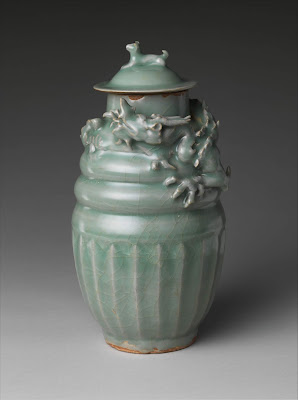when first this page was almost completed, i inadvertently deleted it ... so i will start again and slowly cobble it together ... i'll just be inserting links as and when i discover them ...
i had started out ... watchin rain falling on a temple in japan and wondering if chinese and japanese painters had a longer tradition than europeans of depicting wind and rain ?
but first i had to do some catch-up ...
https://www.metmuseum.org/toah/hd/chin/hd_chin.htm
the first one with rain in its title ... Wu Zhen, Bamboo In Spring Rain

i can see the misty atmosphere but the rain isn't very clear
https://www.ngv.vic.gov.au/essay/wu-zhens-bamboo-in-spring-rain/
good intro to chinese classical art by mae anna pang ...
https://www.ngv.vic.gov.au/essay/three-perfections-poetry-calligraphy-and-painting-in-chinese-art/
intro to nature in chinese art ...
https://www.metmuseum.org/toah/hd/cnat/hd_cnat.htm
intro to chinese painting during the yuan dynasty ...
https://occcricketstats.files.wordpress.com/2018/12/3_yuan.pdf
turns out the above is extracted from this ...
https://occcricketstats.wordpress.com/2018/12/03/a-history-of-chinese-art/
it didn't take long to find an example of the depiction of wind ... painted by zhao mengfu before 1322
https://en.wikipedia.org/wiki/Zhao_Mengfu
zhao mengfu's self-portrait ...
interestingly, zhao mengfu's wife, guan daosheng, was also a landscape painter of some note and she rendered this landscape of bamboos shrouded in mist and cloud ..
she is also remembered for this poem ...
Married Love
by
Guan Daosheng
|  |
|
|
You and I
Have so much love,
That it
Burns like a fire,
In which we bake a lump of clay
Molded into a figure of you
And a figure of me.
Then we take both of them,
And break them into pieces,
And mix the pieces with water,
And mold again a figure of you,
And a figure of me.
I am in your clay.
In life we share a single quilt.
In death we will share a single coffin.
|
|
|
more chinese rain ... but maybe only implicit rain
next up ... Dai Jin, 1388 to 1462 ... this is the only image I've found so far with marks that are clearly intended to signify rain ...
https://www.comuseum.com/painting/masters/dai-jin/boat-returning-amid-wind-and-rain/
eventually, in japan ... there was an artistic storm of rendered rain ...
from hokusai's manga, volume seven ...
kuniyoshi ... Life of Nichiren: Prayer for Rain, c.1835
https://en.wikipedia.org/wiki/Utagawa_Kuniyoshi
Toyoshige, c.1830
Night Rain at Oyama: the Peak seen from the Fudo Temple in the foreground (Oyama yau, Zen fudo yori chojo no zu)
Toyokuni II Utagawa (Toyoshige)
Date: c. 1830
hiroshige, a younger rival of hokusai ... sudden shower in shono
https://en.wikipedia.org/wiki/Hiroshige
my favourite by hokusai, from the mangas ...
found in ...
https://www.metmuseum.org/pubs/bulletins/1/pdf/3263896.pdf.bannered.pdf
you can read the whole of volume seven here ....
https://www.hokusai-katsushika.org/manga-seventh.html .... it contains several masterpieces







































.jpeg)
.png)
.png)
.png)









































